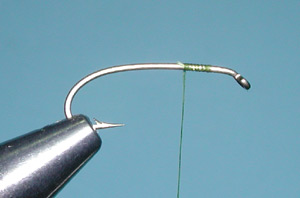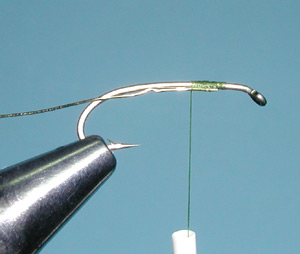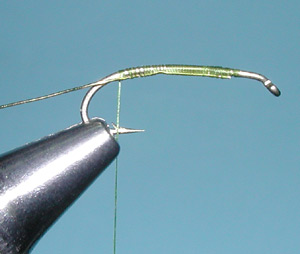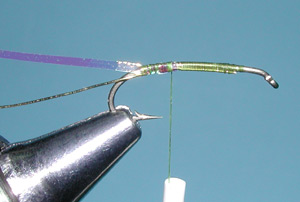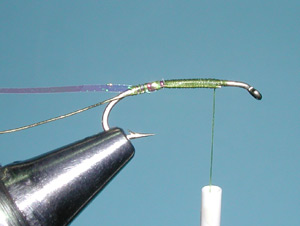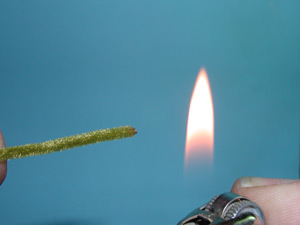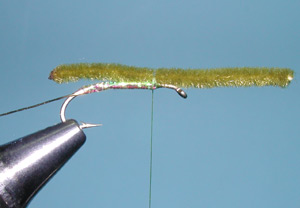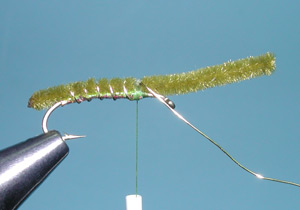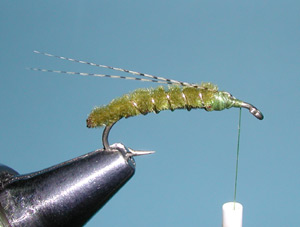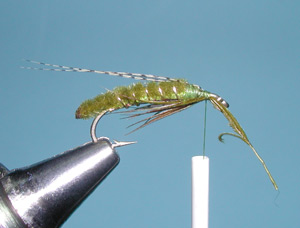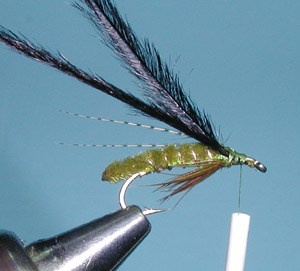Fox’s Poopah – get results with an excellent caddis pupa
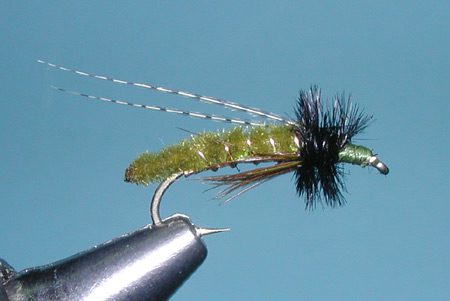
Olive Poopah
Tying Instructions
| Materials
to Order Material, click the link |
|
|---|---|
| Hook | TMC 2302 #12-16 |
| Thread | Uni-Thread Olive 8/0 |
| Head | Uni-Thread Olive 8/0 |
| Underbody | Pearlescent Tinsel |
| Body | Olive Vernille |
| Thorax | Black Ostrich |
| Antennae | Mallard Flank dyed Woodduck |
| Legs | Olive dyed Partridge Hackle |
| Ribbing | Gold Wire, Brassie |
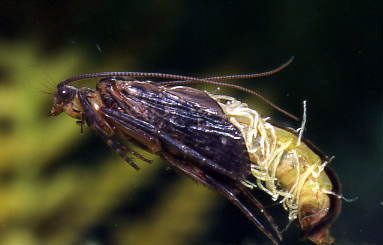

Tim Fox
Fox’s Poopah
Fox’s Poopah designed by Tim Fox in 1990 for use on the lower Sacramento. Tim spent many years as the manager of The Fly Shop in Redding, CA. and now guides as an independent on the Trinity and the Sac. The Poopah has received widespread recognition as an excellent caddis pupa pattern and is used extensively throughout Sierra Nevada streams.
Vernille Body
Tim utilized vernille for a tapered body and a pearl tinsel for the underbody to imitate a gas bubble. The most popular colors are Tan and Olive in a size 14. Vernille is marketed under a number of different names such as Ultra Chenille and Micro Chenille. A bead is often added to give the pattern some ability to go deep into the water column. As a pupa, however, the natural will rise up through the column and this is where the trout focus on this pattern.
Hook Selection
Initially, Poopahs were tied on a TMC 2302, a 2XL hook with a light bend but Tim felt that the wire was a little weak and switched to a 2X heavy wire of a similar shape in the Daiichi 1760. The micro sizes are more often tied with a TMC 3769 which is a 2X heavy nymph hook. Select the color and size of Poopah from what is happening within the stream or creek. BH Olive Poopahs are a good choice for the Spotted Sedge caddis.
Great Euro Nymph
High sticking or Euro Nymphing techniques work well with this pattern. Try the Micro sizes for smaller caddis pupa during the later half of the Summer. Springtime Poopah is a good choice for the Grannom or Brachycentrus caddis and a Tan Poopah does a good job for Saddle Case Caddis (Glossosoma). The fly is best fished as a dead drift with 4-6 feet of tippet using a stack cast method and feeding line. Guides also recommend using a micro mayfly pattern behind it. In October, the October Caddis Poopah is fished differently than the other caddis as this large nymph crawls to the riverbank to hatch rather than rise through the water column. It should be heavily weighted and fished on the bottom.
Variations
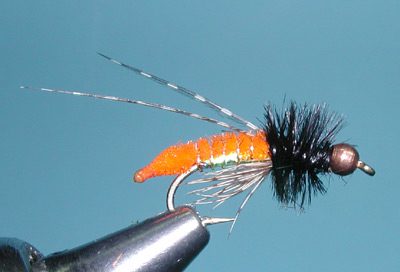
BH October Caddis Poopah
| Hook | TMC 2302 #10 |
| Thread | Uni-Thread Black 8/0 |
| Head | Copper Bead |
| Underbody | Pearlescent Tinsel |
| Body | Orange Vernille |
| Thorax | Black Ostrich |
| Antennae | Mallard Flank dyed Woodduck |
| Legs | Natural Partridge Hackle |
| Ribbing | Gold Wire, Brassie |
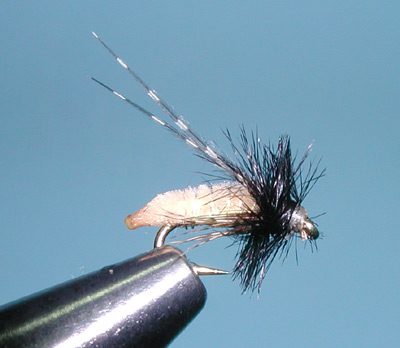
Tan Micro Poopah
| Hook | TMC 3769, #18 |
| Thread | Veevus Tan 14/0 |
| Head | Uni-Thread Olive 8/0 |
| Underbody | Pearlescent Tinsel |
| Body | Tan Micro Vernille |
| Thorax | Black Ostrich |
| Antennae | Mallard Flank dyed Woodduck |
| Legs | Natural Partridge Hackle |
| Ribbing | Gold Wire, Small |
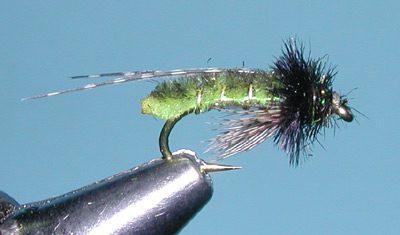
Springtime Poopah
| Hook | TMC 3769, #14-16 |
| Thread | Veevus Tan 14/0 |
| Head | Uni-Thread Olive 8/0 |
| Underbody | Pearlescent Tinsel |
| Body | Yellow Vernille , marked Olive and Black |
| Thorax | Black Ostrich and Peacock Herl |
| Antennae | Mallard Flank dyed Woodduck |
| Legs | Olive dyed Partridge Hackle |
| Ribbing | Gold Wire, Brassie |

